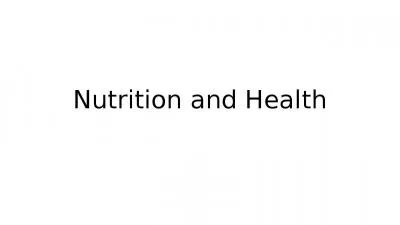PPT-Intake and Output
Author : test | Published Date : 2015-10-26
Allied Health amp Medicine Begin Class by reading Ch 215 in Red Book To maintain health the body must take in a certain amount of fluid each day Generally a healthy
Presentation Embed Code
Download Presentation
Download Presentation The PPT/PDF document "Intake and Output" is the property of its rightful owner. Permission is granted to download and print the materials on this website for personal, non-commercial use only, and to display it on your personal computer provided you do not modify the materials and that you retain all copyright notices contained in the materials. By downloading content from our website, you accept the terms of this agreement.
Intake and Output: Transcript
Download Rules Of Document
"Intake and Output"The content belongs to its owner. You may download and print it for personal use, without modification, and keep all copyright notices. By downloading, you agree to these terms.
Related Documents














